| Numinous The Music of Joseph C. Phillips Jr. |
The Numinosum Blog
|
SUNDAY, SEPTEMBER 5, 2010 Reviews of Vipassana sometimes cite Steve Reich as a general and Music for 18 Musicians as a specific influence. Indeed while there are moments in some movements where the comparison is apt (and very flattering), the totality of Vipassana, in particular the second and the final movements, are much removed from Reich and 18. Whereas 18 is built on the repetition of churning short overlapping rhythmic cells, "Stillness Flows Ever Changing" flows from weaving chains of larger melodic passages. Often these melodies are temporally distinct from one another: a melody of longer tones slowly moving in counterpoint against a more rhythmically active one. This happens throughout the piece. Two examples are: in the middle of the piece, Ben Kono's soprano saxophone floats on top of slow waves of melody from the strings with the piano, clarinet, and guitars moving at a more judicious pace; and near the end, with the trombone melodically heralding above a sweeping, long lined string melody, pulsing vibraphone and piano, and undulating flute, harp, tenor saxophone, glockenspiel. Another moment to directly illustrate this is from early in "Stillness" (shown below in a transposed score, minus the voices and a few other instruments): the English Horn throughout this section is moving at a much gentler pace than say the guitar and piano, who are spinning out a much faster, snakier melody and the violins and violas in a more middle ground between the two. The languid resultant effect is something akin to watching the evening sky during a crisp fall sunset, where you might see the high wispy cirrus clouds moving and changing slowly, while the lower puffy cumulus ones are moving and changing more rapidly. It is fitting that the first day of fall is our performance of Vipassana because to me the two inner movements, "Stillness Flows Ever Changing" and "Into all the Valleys Evening Journeys" always had an autumnal fragrance about them. Numinous performs Vipassana Wednesday September 22nd, 2010 8 PM to 9 PM $10 Brooklyn Lyceum 227 4th Avenue Park Slope Take the M, R Train to Union Street Learn more about Vipassana by reading the other installments of the Inside Vipassana series: 2010 series Inside Vipassana #11: Vipassana Reborn (recap of the 2009 Inside Vipassana series) Inside Vipassana #12: Bang a Gong with Jared Soldiviero (Numinous percussionist Jared Soldiviero speaks about Vipassana) POSTED BY NUMINOUS AT 2:39 PM
0 Comments
Next up in the Numinous Crib Notes series: Race Race was originally written for the Pulse project, The Eloquent Light back in 2006. If you don't know, Pulse is the composer 'federation' I lead and it also features composers Darcy James Argue, Jamie Begian, JC Sanford, Joshua Shneider, and Yumiko Sunami. The original version of Race was for a 10-person chamber ensemble, in addition to the soloists John McNeil on trumpet and Pete McCann on guitar. The composition takes its' name from my researching and viewing historical photos of Olympic runners going all the way back to the 1920 Olympics. It was wonderful to learn about and see photos of the great runners of the past such as Carl Lewis, Edwin Moses, Jesse Owens, Michael Johnson, Flo-Jo (Florence Griffith Joyner), Kip Keino, Paavo Nurmi, and Joan Beniot, all whose photos and more were used in a slide show that accompanied the original performances of Race. There were two photos that initially captivated me (above): one was a photo of Wilma Rudolph from the 1960 Olympics in Rome (I love the joy she has on her face as she crosses the line and without knowing her painful childhood and of course the oppressive racial environment at the time, one can imagine that she never knew of such hardship and disappointment); the other photo was a shot of Marion Jones from the 2000 Olympics in Australia (No matter what you think of Marion Jones, I just found the photo shares with the Wilma Rudolph one, an accurate depiction of the happiness running (and winning) can bring out in someone and that is one feeling I wanted Race to give to the listener). At the opening of Race, the guitar plays only three pitches (Bb-Eb-F) in an arpeggio pattern shifting between groups of three and four. This beginning is both harmonically (is it the key of Eb? F? Bb? or any number of other possibilities) and rhythmically ambiguous (the shifting pattern floats over the 3/2 metric stresses) and leads to the entrance of the harp playing (F-C-Bb), also in an arpeggio leading into the trumpet and trombone melody a few bars later. At this point I can imagine the stretching and preparation before the start of an early morning run or runners milling around before the start of a race. As the composition progresses there are various overlapping or "chasing" patterns between instruments of differing rhythmic groupings, with the trombone more melodic, often foreshadowing various intervallic permutations that are heard later in other instruments. The trumpet solo enters playing on top of various "streams" of melody, moving at different rhythmic rates until the tuba and cello enter with a more "funky" bass line. A brief interlude (I call it a "second wind") picks up some of the previous material heard in the trombone and, much like the final lap of a race, pushes it into a slightly different gear leading into the guitar solo. The end of the guitar solo smoothly leads into the last section which harmonically starts like the beginning, however now more rooted in various modal configurations of Eb (although there is never an Eb in the bass); the trombone and trumpet, again melodically dance around each other one last time before finally fading out, leaving the harp and violin as the last statements in the piece. At a Pulse rehearsal a couple of years ago, I told the musicians this section was like running through the finish line and finally beginning to catch your breathe as you wind down. Overall, like John Adams' Short Ride in a Fast Machine or Micheal Torke's Javelin or Run, I wanted Race to be a portrait of motion; a linear progression of movement to the end, much like an actual race. However there were no images of runners in my mind as I was composing the piece. Only after looking back on Race, and this sense of movement was I able to explore running as a metaphor. Here's what I said about Race in the program notes: Running is one of the oldest and most basic of human impulses. It can be a utilitarian exercise or save you from immediate danger. Also, as demonstrated by ‘Dan’ in World Record from the film Animatrix, running can be a vehicle to enlightenment as well as a delightful endeavor in and of itself, as any young kid in a playground would illustrate. My composition, Race, is inspired by that child-like joy of movement: of testing your body and spirit against others and against yourself. For inspiration, I used various historic images of runners from the Olympic Games that I felt were avatars of this drama, but also representative of the beauty and exultation of the race. Numinous May 24, 2010 9pm Tea Lounge 837 Union Street Brooklyn, NY 11215-1308 (718) 789-2762 Donations (please be generous!) featuring: Ben Kono, Dan Willis, Ed Xiques (woodwinds); Stephanie Richards (trumpet); Ernest Stuart (trombone); Tom Beckham (vibraphone); Andrew Green (guitar); Megan Levin (harp); Jared Soldiviero (percussion); Ana Milosavljevic, Scott Tixier (violins); Will Martina, Lauren Riley-Rigby (cellos); Shawn Conley (bass) Be prepared, check back later for more... POSTED BY NUMINOUS AT 10:46 PM 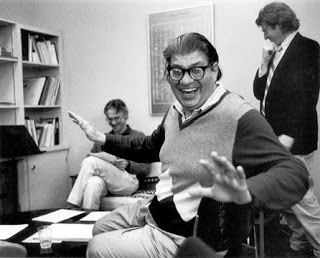 crib notes (from Urban Dictionary): a small instrument used to aid in the art of cheating. It is generally small pieces of paper with answers to a test, or just notes on a specific topic; notes for cheating on exams written on small and easily concealable pieces of paper with stealth in mind. Called "crib" notes because of the manner in which you hold the notes under your left hand/arm while writing with your right arm, keeping them concealed from teachers/professors with wondering eyes; notes written on the hand, arm, or leg to assist in cheating on quizzes and exams. In anticipation of the upcoming Numinous concert on May 24th, in the spirit of my Inside Vipassana series I did last fall, over the next week leading up to the concert (as time allows with all of the preparations) I thought I'd give you some brief insight to some of the compositions we'll be throwing down at the Brooklyn's Tea Lounge... First up, Madame Press Never Had to Holler at Morty Morton Feldman is one of my inspirations. In college, I remember vividly studying a number of his works in 20th century Music Theory and was astonished at how his music and approach was so distinct and beautiful with compositions such as deKooning, Rothko Chapel, For Franz Kline, Coptic Light, For Samuel Beckett, Only, among many, that I loved (and still love). Even at that time I made a connection between Feldman's evanescent ethereal clouds of sounds and bare sonorities with Claude Debussy's sonic liberation of harmony and quest for Symbolistic understatement. After many years of listening to their music and reading about their respective musical philosophies, they continue to hold a particularly special place for me. So when I started the writing of Madame Press Never Had to Holler at Morty, I treated it as a mash-up experiment: a 'what if?' project in the great Marvel comic tradition. This was my first attempt at fusing Feldmantonian elements with more funky, jazzy grooves (a few years later, my Quantum Fluctuations would be the second). Here's what I said about the piece in the program notes on its premiere in May 2001: American composer, Morton Feldman (1926-1987) wrote a piece for his former piano teacher entitled Madame Press Died Last Week At Ninety (1970). In that piece, which I first heard on John Adams’ 1991 recording American Elegies (Nonesuch 79249-2), Morton Feldman’s typically soft and subtle shifts of sonorities and colors are there, but the piece also features, atypically for Feldman, a recurring motive (a downward major third)-one of the first of his pieces to feature repetition. In my composition, as a starting point, I took Madame Press Died Last Week At Ninety and a quote from Feldman’s Essays (1985) speaking about how Madame Press was not a disciplinarian. Then asking myself what would happen if Morton Feldman listened to too much 70’s funk and soul (by way of 1996’s "Makes Me Wanna Holler"" by Me’shell Ndegéocello) and brought that to his lessons with Madame Press: would she still not be a disciplinarian? So you have this bass line from "Makes Me Wanna Holler" (transposed): coexisting with Feldman's falling third motif: with me adding my own take, combining to form (transposed): To get your ears ringing for the 24th, here's a video of a stripped down and edited version I did for a Numinous performance at a Roulette Children's concert in 2007 with Dan Willis (tenor sax), Amanda Monaco (guitar), and Deanna Witkowski (piano): Now for the Children's concert I took out a few elements from the original which allowed me to shorten the length of the piece while still keeping the general sense of the piece. However on the 24th, we'll be doing the original version.
Numinous May 24, 2010 9pm Tea Lounge 837 Union Street Brooklyn, NY 11215-1308 (718) 789-2762 Donations (please be generous!) featuring: Ben Kono, Dan Willis, Ed Xiques (woodwinds); Stephanie Richards (trumpet); Ernest Stuart (trombone); Tom Beckham (vibraphone); Andrew Green (guitar); Megan Levin (harp); Jared Soldiviero (percussion); Ana Milosavljevic, Scott Tixier (violins); Will Martina, Lauren Riley-Rigby(cellos); Shawn Conley (bass) Check back later for more Crib Notes... (Photo credit: Morton Feldman with John Adams by Betty Freeman from www.newmusicbox.org) POSTED BY NUMINOUS AT 6:16 PM Next Thursday is the premiere of my composition, Liquid Timepieces, commissioned by pianist Simone Dinnerstein for her Neighborhood Concert Series. It was written for and will be performed by the wonderful student group Face the Music on April 15th 7p.m. at the P.S. 321 auditorium. The years 2010 and 2011 are the anniversaries of Gustav Mahler’s birth (1850) and death (1911). I wanted to celebrate these so-called ‘Jubilee Years’ by writing a work that honors the profound influence Mahler’s music has exerted on my own musical development and thinking. Liquid Timepieces is my own musical encomium to him and despite some subtle references to musical moments from Mahler’s Symphony No. 1, No. 3, and No. 9, Liquid Timepieces is not meant to sound like Mahler. Rather, I hoped, through my own distinct musical expression and language, to create a similar resonance to the protean spirit of life and the world that permeates his works. The evocative phrase, "liquid timepieces," comes from a line in the poem "Designer Kisses" by Major Jackson. I heard Major Jackson recite the poem himself last summer at the 2009 River to River Festival Poets House tribute to Meredith Monk. I didn't remember much from the poem at the time except this one phrase that stuck out and I wrote down: By morning, We’re laid out like liquid timepieces, each other’s exercise In perpetual enchantment, for there is that beach in us that is untranslatable Liquid Timepieces, scored for Flute, Bb Clarinet, Alto Saxophone, Electric Guitar, 2 Electric Keyboards, and a small string section (violins, violas, cellos, bass), opens with a declarative concert G# played in various octaves by all of the instruments (see above photo of the first page to the score). This iteration of the G# becomes a recurring character throughout the piece: sometimes as a waylayer, sometimes as an interrupter, and other times as a something that just needs to be heard amongst other things. A 'steady state' eighth note pulse begins in the keyboard (which you can also see above) and can be felt in various instruments throughout the first half of the composition, generally in the guise of little cells of rhythmic activity. This forward momentum continues until a longer lined melodic figure slowly becomes emergent; at first only in the cellos and bass, then more prominently in the violins and violas, and later the woodwinds join in as the sweeping melody builds to a higher yet softer place and as the rhythmic motion begins to lengthen, we arrive at a moment of slower repose. Earlier I mentioned some connections to Mahler's music buried within Liquid Timepieces. At this median point in the music I wanted to highlight one of those connections which is decidedly on the surface. The counterpoint in the above trio (in concert pitch and in 2/2 meter) between the flute, clarinet, and violin is consciously reminiscent of moments in Mahler's Ninth Symphony where the full orchestral texture is dropped for a more chamber music-like atmosphere. And the melody played by the clarinet above, comes directly from the wonderfully exalted horn melody in the last movement of Mahler's Ninth: This melody, shown above in concert pitch in its first appearance, is generally marked in the score "stark hervortretend" (in marked prominence). Heard slightly different the few times in the Mahler movement it comes up, this phrase slices through the symphonic background texture like a fiery prophet coming out of the wilderness heralding wisdom and insight at precisely the moment needed. However, in Liquid Timepieces I use the melody more as a wise sage that modestly offers insight clothed as advice in personal choice and direction: it functions either as a sort of cantus firmus, just one part of an egalitarian melodic scheme (see above trio) or as an effect much like a musical palimpsest, where 'ghosts' of the Mahler melody are layered on top of each other to create a texture of weaving melodies. In the below excerpt from my score you can see I'm asking the musicians to gradually improvise with either a version of the actual Mahler melody (Synth 1 and Cello; Violin 2) or a modified retrograde version of it (Synth 2 and Viola). Not improvisation in a 'jazz' sense where the soloist tries to create variations on an original melody often not actually stating the melody, but rather improvisation where the musicians keep the melodic shape and tones intact, but change their rhythmic and temporal approaches to playing it. The floating texture continues and builds as a simple bass melody enters, but gradually fades as rhythmic pulses, whiffs from the earlier steady state incarnation, begin to break through to the foreground from its background origin. Soon the eighth note pulses and a short, repeating musical cell that is a canon between the keyboard 1 and alto saxophone, clarinet, and keyboard 2, along with a spasmodic occurrence of that octave G# I spoke earlier about, all overlap each other and grow in intensity and excitement. This energy is dissipated somewhat by a final string melodic coda (a distance relative of the Mahler melody above) while insistent eighth note cells are heard in the woodwinds and keyboard 1. However, the melody and pulses soon escalate into a final resplendent flourish on G#.
I've been to a few of Face the Music's rehearsals of Liquid Timepieces, and while this is difficult music, the students are doing a wonderful job tackling not only the technical challenges but the musical and conceptual ones as well. I hope you can make it to next Thursday's premiere performance to hear for yourself. POSTED BY NUMINOUS AT 7:00 AM |
The NuminosumTo all things that create a sense of wonder and beauty that inspires and enlightens. Categories
All
|
Thanks and credit to all the original photos on this website to: David Andrako, Concrete Temple Theatre, Marcy Begian, Mark Elzey, Ed Lefkowicz, Donald Martinez, Kimberly McCollum, Geoff Ogle, Joseph C. Phillips Jr., Daniel Wolf-courtesy of Roulette, Andrew Robertson, Viscena Photography, Jennifer Kang, Carolyn Wolf, Mark Elzey, Karen Wise, Numinosito. The Numinous Changing Same album design artwork by DM Stith. The Numinous The Grey Land album design and artwork by Brock Lefferts. Contact for photo credit and information on specific images.
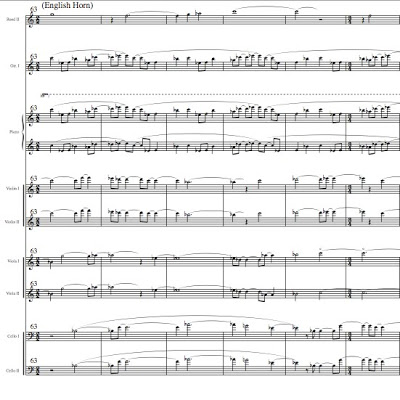
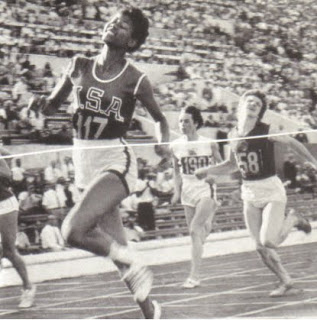
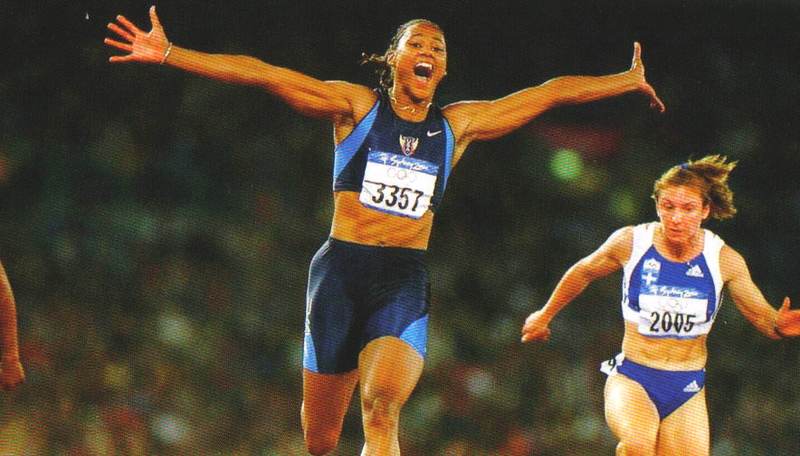
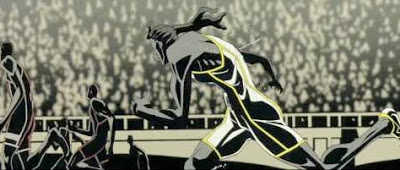


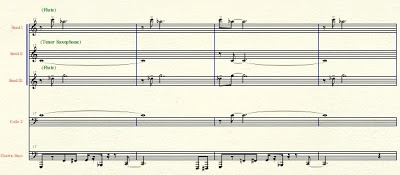
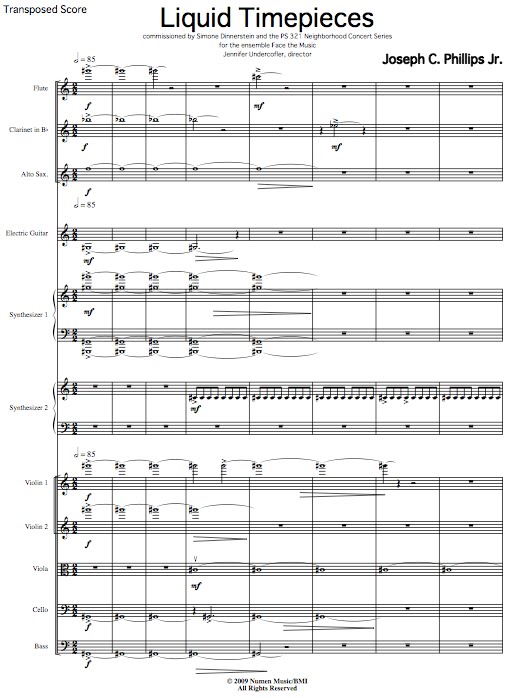


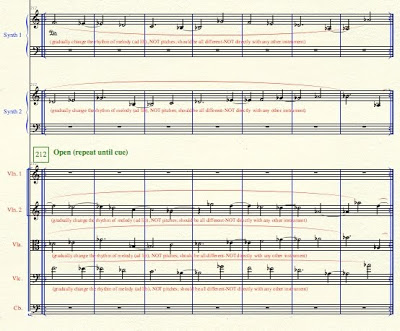
 RSS Feed
RSS Feed